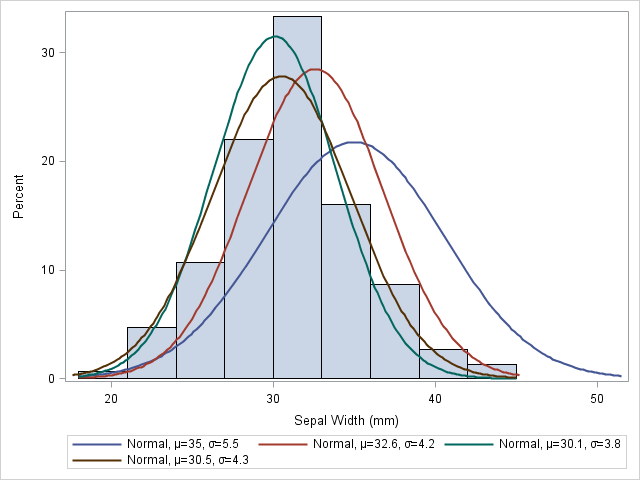Cloudera Databricks Data Science Certification Questions and Answers (Dumps and Practice Questions)
Question : A fruit may be considered to be an apple if it is red, round, and about " in diameter.
A naive Bayes classifier considers each of these features to contribute independently
to the probability that this fruit is an apple, regardless of the

1. Presence of the other features.
2. Absence of the other features.
3. Presence or absence of the other features.
4. None of the above
Correct Answer : 3
Explanation: In simple terms, a naive Bayes classifier assumes that the value of a particular feature is unrelated to the presence or absence of any other feature, given the class variable. For example, a fruit may be considered to be an apple if it is red, round, and about 3" in diameter. A naive Bayes classifier considers each of these features to contribute independently to the probability that this fruit is an apple, regardless of the presence or absence of the other features.
Question : Regularization is a very important technique in machine learning to prevent over fitting.
And Optimizing with a L1 regularization term is harder than with an L2 regularization term because

1. Since the L1 norm is not differentiable
2. Since derivative is not constant
3. The objective function is not convex
4. The objective function is convex
Correct Answer : 1
Explanation: L1 regularization is often preferred because it produces sparse models and thus performs feature selection within the learning algorithm, but since the L1 norm is not differentiable, it may require changes to learning algorithms, in particular gradient-based learnersA convex function is a continuous function whose value at the midpoint of every interval in its domain does not exceed the arithmetic mean of its values at the ends of the interval.Regularization is a very important technique in machine learning to prevent overfitting. Mathematically speaking, it adds a regularization term in order to prevent the coefficients to fit so perfectly to overfit. The difference between the L1 and L2 is just that L2 is the sum of the square of the weights, while L1 is just the sum of the weights.
Much of optimization theory has historically focused on convex loss functions because they're much easier to optimize than non-convex functions: a convex function over a bounded domain is guaranteed to have a minimum, and it's easy to find that minimum by following the gradient of the function at each point no matter where you start. For non-convex functions, on the other hand, where you start matters a great deal; if you start in a bad position and follow the gradient, you're likely to end up in a local minimum that is not necessarily equal to the global minimum. You can think of convex functions as cereal bowls: anywhere you start in the cereal bowl, you're likely to roll down to the bottom. A non-convex function is more like a skate park: lots of ramps, dips, ups and downs. It's a lot harder to find the lowest point in a skate park than it is a cereal bowl.
Question :
One can work with the naive Bayes model without accepting Bayesian probability

1. True
2. False
Correct Answer : 1
Explanation: For some types of probability models, naive Bayes classifiers can be trained very efficiently in a supervised learning setting. In many practical applications, parameter estimation for naive Bayes models uses the method of maximum likelihood; in other words, one can work with the naive Bayes model without accepting Bayesian probability or using any Bayesian methods.
Related Questions
Question : Which of the following are advantages of the Support Vector Machines?
1. Effective in high dimensional spaces.
2. it is memory efficient
3. possible to specify custom kernels
4. Effective in cases where number of dimensions is greater than the number of samples
5. Number of features is much greater than the number of samples, the method still give good performances
6. SVMs directly provide probability estimates

1. 1,2,3,4
2. 2,3,4,5
3. 3,4,5,6
4. 1,2,4,5,
5. 1,3,5,6
Question : Select the correct problems which can be solved using SVMs
1. SVMs are helpful in text and hypertext categorization
2. Classification of images can also be performed using SVMs
3. SVMs are also useful in medical science to classify proteins with up to 90% of the compounds classified correctly
4. Hand-written characters can be recognized using SVM

1. 1,2 and 3
2. 2,3 and 4
3. 1,3, and 4
4. All 1,2,3 and 4 can be
Question : Support vector machines (SVMs) are a set of supervised learning methods used for

1. Linear classification
2. Non-linear classification
3. Regression
4. Only 1 and 3
5. All 1,2 and 3 are correct
Question : Which is an example of supervised learning?

1. PCA
2. k-means clustering
3. SVD
4. EM
5. SVM
Question : Which of the following are point estimation methods?

1. MAP
2. MLE
3. MMSE
4. 1 and 2 only
5. 1,2 and 3
Question : In statistics, maximum-likelihood estimation (MLE) is a method of estimating the parameters of
a statistical model. When applied to a data set and given a statistical model, maximum-likelihood estimation
provides estimates for the model's parameters and the normalizing constant usually ignored in MLEs because ___________

1. The normalizing constant is always just .01 to .09 lesser than 1
2. The normalizing constant is always just .01 to .09 higher than 1
3. The normalizing constant is can never be zero which is exepected 1 time zero out of 10
4. There is no impact of normalizing constant on the maximizing value